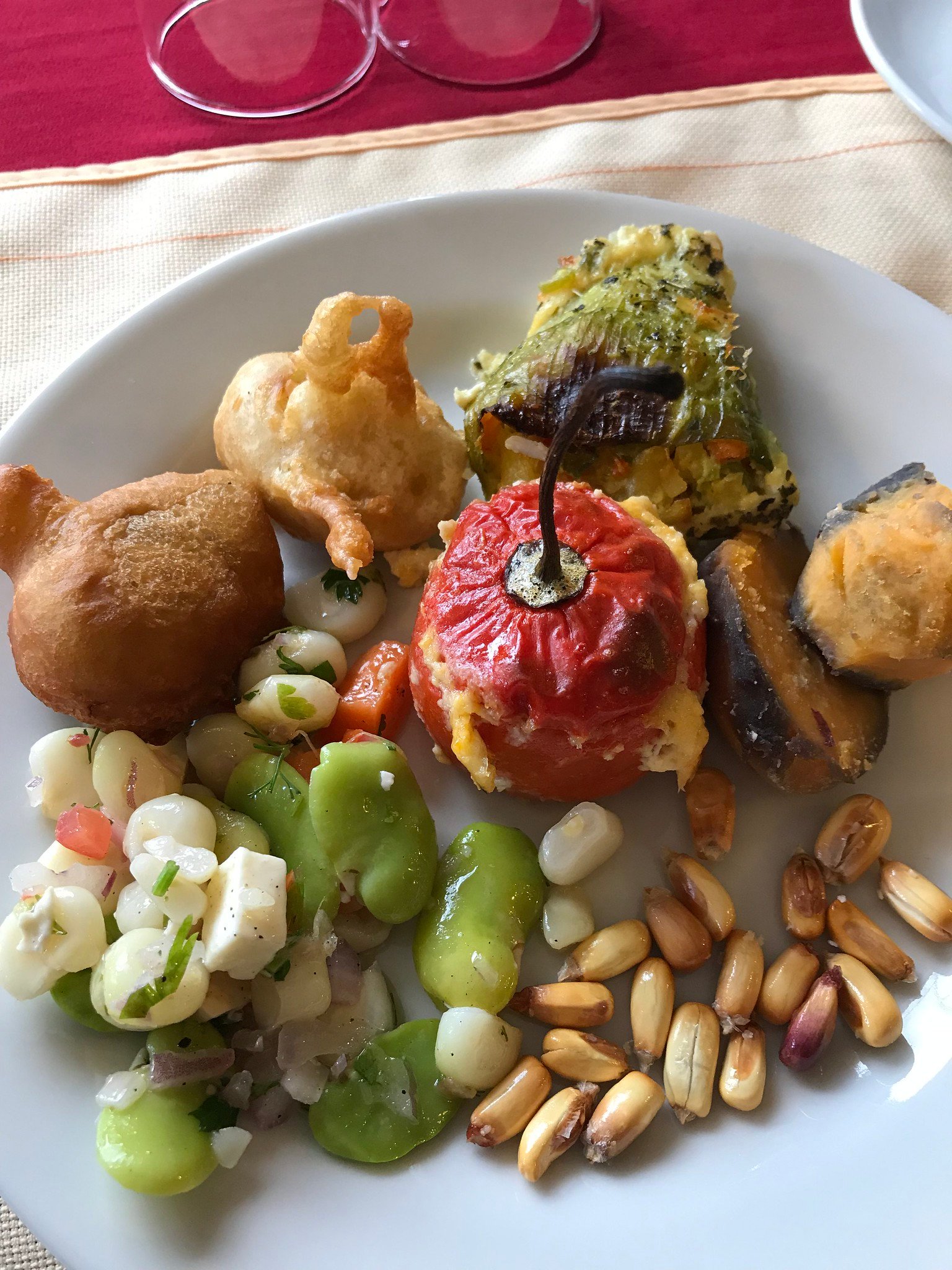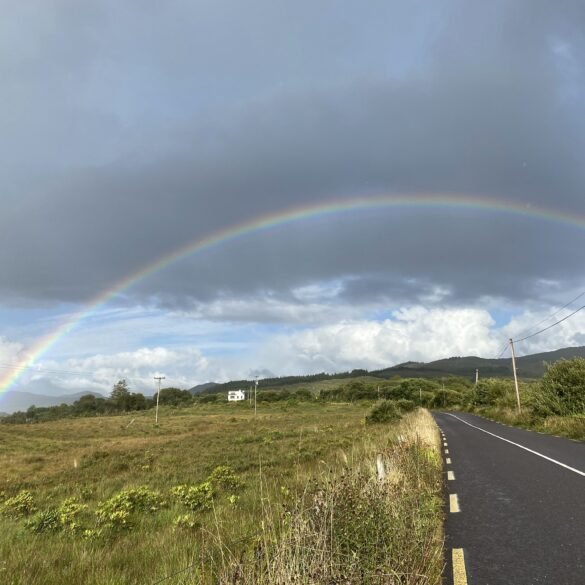How come Peru has two restaurants in the top 10 restaurants in the world list while the U.S. has none? This was one of the questions we puzzled over while boarding our flight to Lima. The answer was found shortly thereafter, during our nine-day crisscrossing of the land of the Incas, alpacas, and Andean condors. Peru is a gastronomical heaven, and for our entire stay, its food was a real highlight.
Our introduction to Peruvian food began long before our trip when we started to frequent a local gem on the north side of Chicago, Taste of Peru, a family-owned restaurant located in a nondescript strip mall on Clark Street. With faded photos of Machu Picchu on the walls, colorful tablecloths, and Spanish-speaking staff, this mom-and-pop shop could have easily been in Cusco or somewhere in the Sacred Valley. It is here that we tried for the first time lomo saltado (stir-fried beef), papas a la huancaina (potatoes in spicy cheese sauce), and chicha morado (purple corn beverage), and decided that one day we should visit the country where these dishes came from.
After our plane landed in Lima and we walked to a nearby terminal to catch a connecting flight to Arequipa, we came across a ceviche restaurant. With 1,500 miles of uninterrupted Pacific Ocean coastline, it is not surprising that ceviche, seafood cured in lime juice, is one of the most popular and recognizable Peruvian dishes. Peru even has a National Ceviche Day, which is June 28. Ceviche at the Lima airport was probably the best airport meal we’ve ever eaten. Later, we enjoyed another ceviche at a local market and even learned how to prepare one at a cooking class in Cusco.

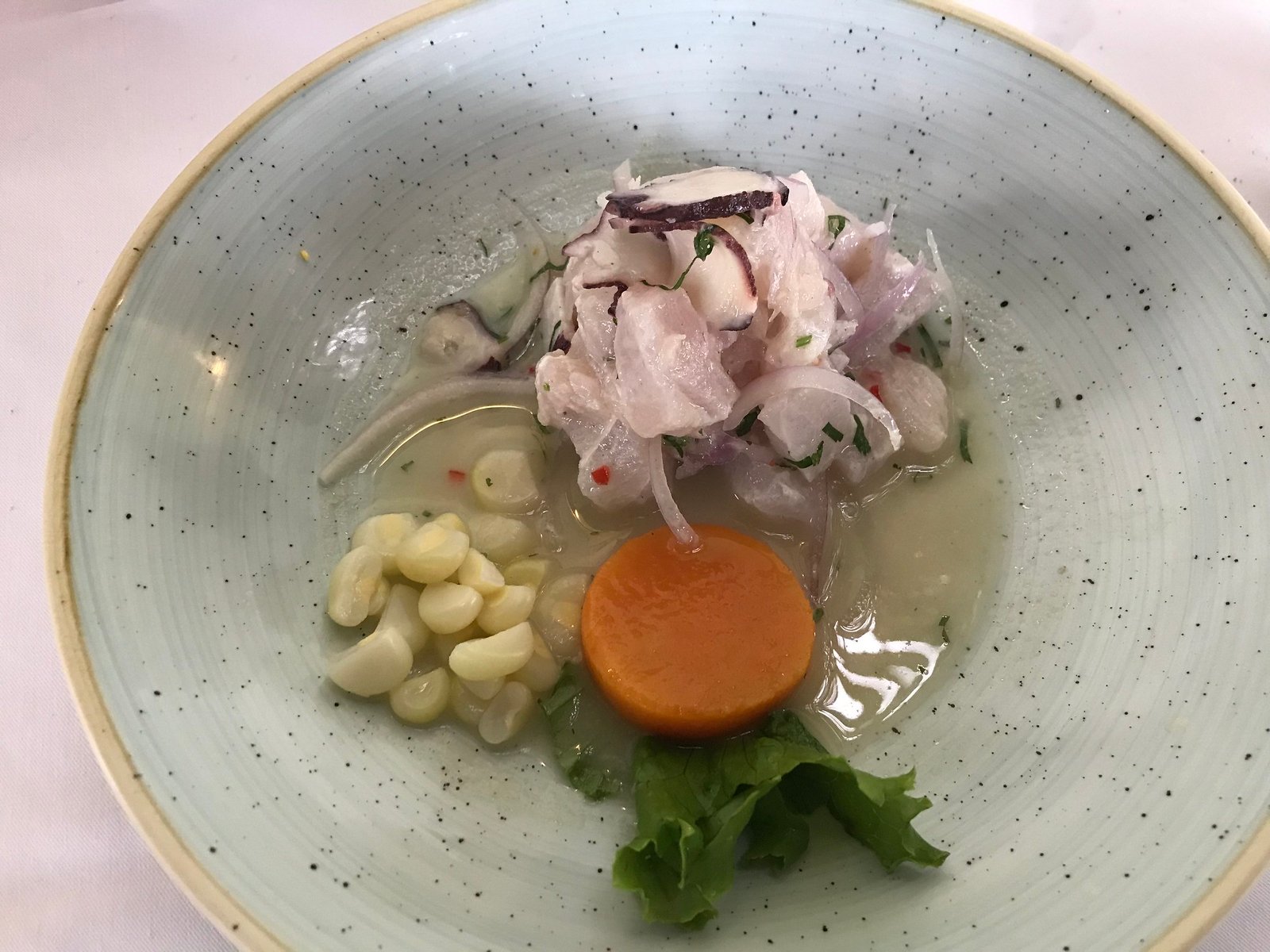

The staple food of Peruvian cuisine, however, is unquestionably potato dishes. The potato originated in the Peruvian Andes and can be considered the king of all vegetables in Peru. As someone who was born and grew up in the “potato” country of Belarus, I felt at home. Local markets were selling dozens of types of potatoes, all sizes, shapes, and colors, and restaurants boasted a great variety of potato dishes. Some potato dishes were truly exquisite. Causa is a layered potato casserole that looks like something from the pages of a contemporary dining magazine. Papas a la huancaina, with its delicious yellow sauce, was our other favorite and as good as at Chicago’s Taste of Peru.
If the potato is the king staple food in Peru, then quinoa is the queen. Another native plant of Peru, quinoa still lacks wide recognition in the U.S., but in Peru, quinoa is mainstream. Quinoa dishes we encountered included quinoa soup, quinoa salad, quinoa porridge, and quinoa stew. There were even quinoa desserts and quinoa beer!
Another native food of the Peruvian Andes is a very cute creature – cuy (a guinea pig). We already wrote that we could not get ourselves to try a fried guinea pig, but the locals absolutely love eating them and could not quite grasp why we were so repulsed.
Peru is a country of rich biodiversity. In addition to seafood of the Pacific Ocean and crops and animals of the Andes, the Amazon River and jungle in the north provide a wealth of exotic ingredients such as tropical fish, mushrooms, and giant Amazonian snails. We tried these incredible dishes in Lima at Amaz restaurant, which sadly did not survive the pandemic. But there are plenty of other restaurants serving unique Peruvian Amazonian food.


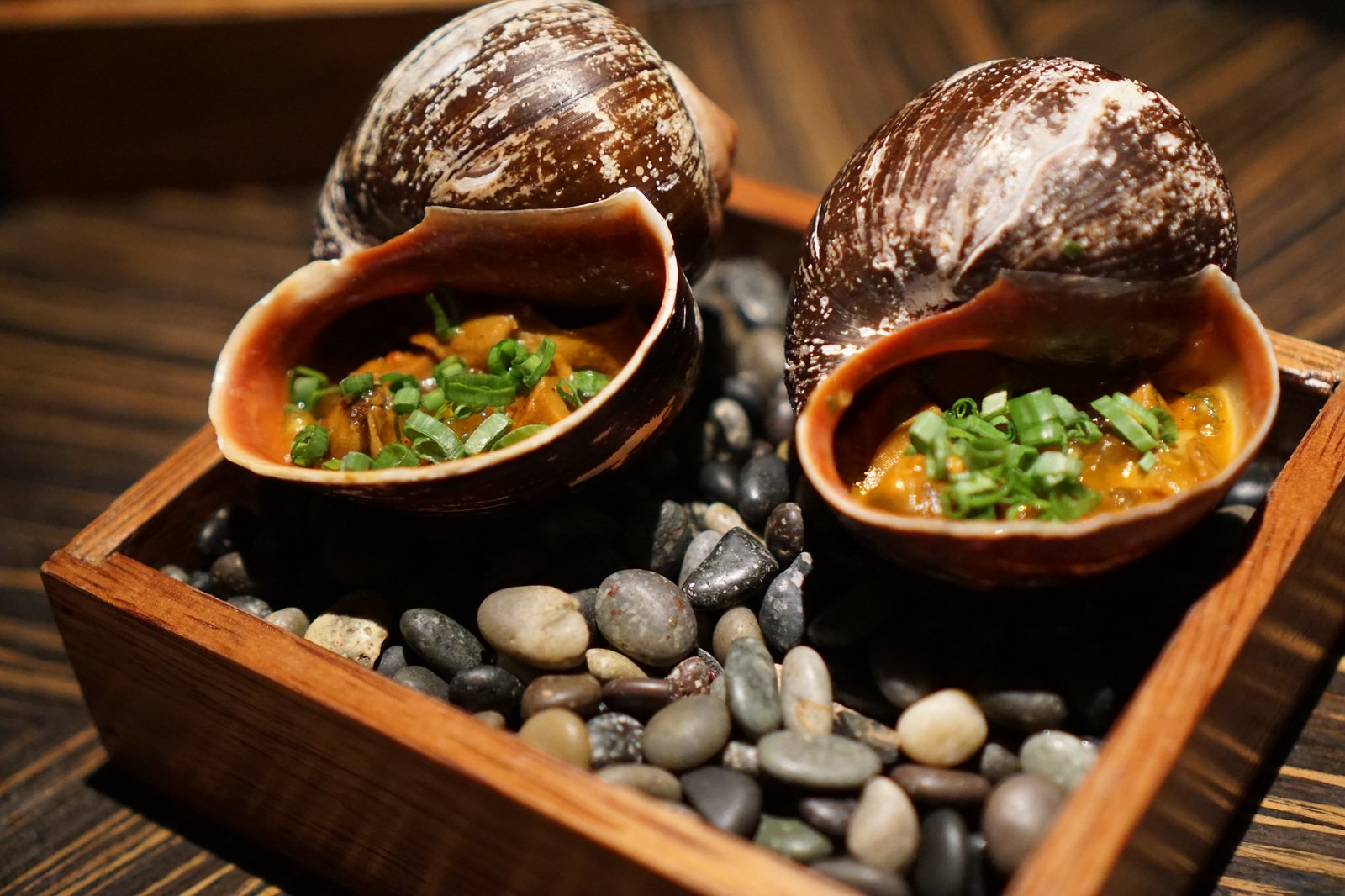
Coming to Peru, we needed to learn some new words relating to dining. When I asked Julia whether she wanted “chifa” or “nikkei” for dinner, she just gave me a confused look and asked me to elaborate.
“Chifa” is a blend of Chinese and Peruvian cuisines, or a place where such food is served. At the end of the 19th century and early 20th century, immigrants from Guangzhou started to arrive in Peru, bringing with them Cantonese culinary traditions and adapting them to the ingredients of the new land. Walking through Lima’s Chinatown, we saw unending rows of what at first appeared to be Chinese restaurants with red lanterns, dragons, and koi fish. However, these were not Chinese restaurants as we know them. These were “chifas”. Menus offered dishes that were Chinese but with Peruvian ingredients and influences: chaufa arroz (Cantonese-Peruvian style fried rice), tallarin saltado (fried noodles with eggs), kam lu wonton (wonton topped with chicken, vegetables, and pineapple with a sweet ginger and tamarind sauce). The most interesting thing was that nearly every chifa had a crucifix displayed (speaking of mixing not only culinary traditions but also religious symbols). We had our chifa dinner at Cusco’s Kion restaurant, an upscale chifa with a modern twist on Chinese-Peruvian cuisine.
“Nikkei”, on the other hand, is a blend of Japanese and Peruvian cuisines. Like the Chinese, Japanese immigrants started to arrive in Peru at the turn of the 20th century and influenced the country in their way. Japanese chefs are often credited with transforming the ceviche recipe by teaching Peruvians to marinate seafood in lime juice. Like chifa, nikkei is all about local ingredients (choclo corn, quinoa, yellow peppers) prepared using Japanese culinary traditions and techniques. In addition to ceviche, other popular dishes include tiradito (sashimi dressed with a spicy aji sauce) and acevichado (a sushi roll with ceviche). Nikkei’s cuisine is slowly but surely catching fire worldwide. Lima’s Maido, a nikkei haute restaurant, is one of the best in the world.
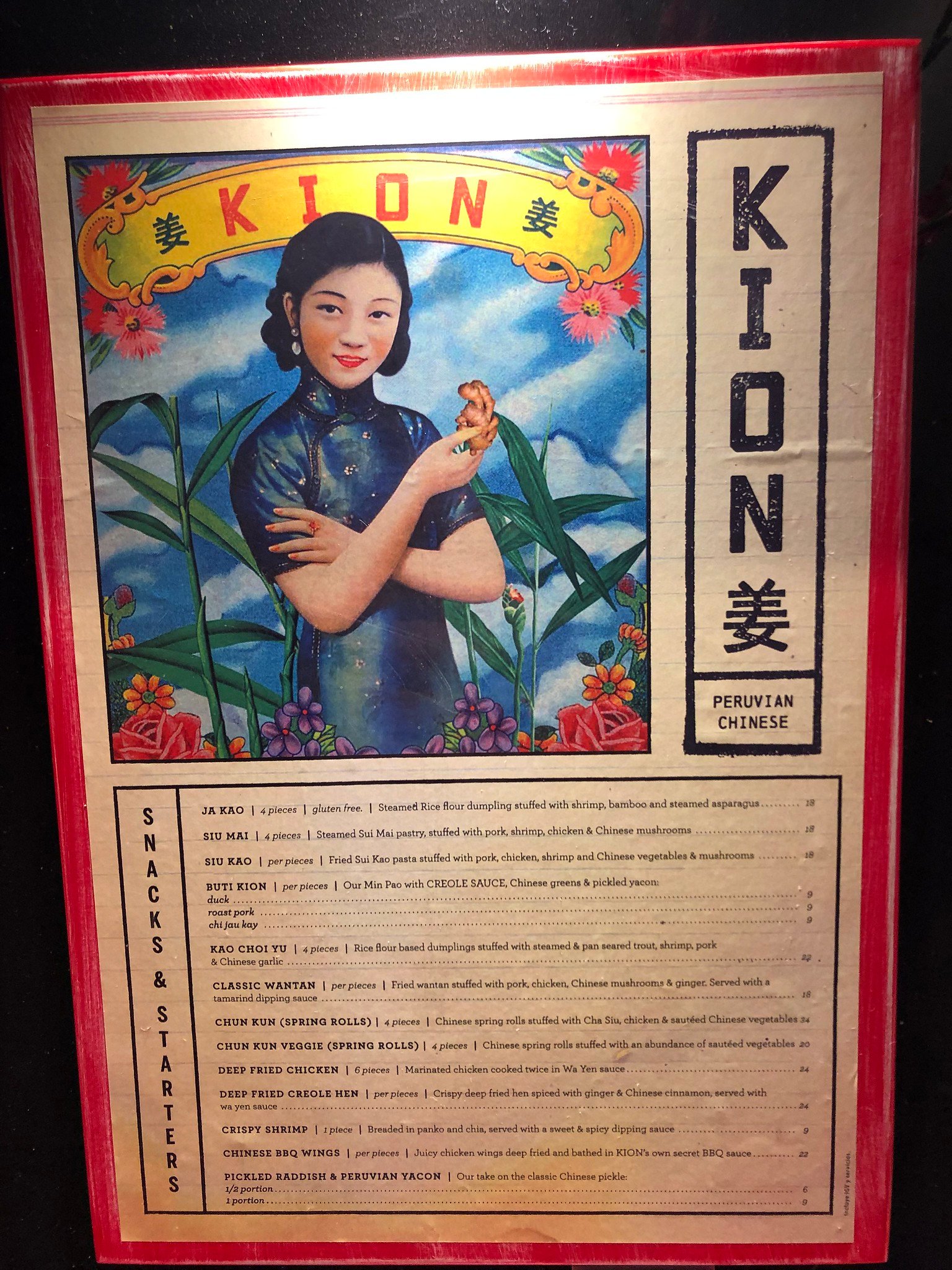
Speaking of the world’s best restaurants, Peru, and especially Lima, has its share of them. Central and Maido regularly make the list of the world’s top 10 best restaurants. Other restaurants, such as Astrid y Gaston and Mayta, are also frequently featured as the best in South America. The popularity and high ranking mean that you need to make reservations months in advance. We did not have these reservations traveling to Peru and did not get to enjoy them. So, reserve well in advance.
One last thing I want to mention about dining in Peru is that food presentation was always top-notch, regardless of whether it was a fancy restaurant or a simple eatery in a rural area. Time after time, we were blown away by how food was presented and delivered to our tables. Peruvians take their dining game very seriously.
In a nutshell, Peruvian cuisine is all about local ingredients that are prepared per the rich culinary traditions of a culturally diverse country. If you travel to Peru to do the Machu Picchu hike or visit other Inca ruins in the Sacred Valley, Peruvian food will be there, whether at a Michelin-star restaurant or a local market, and it will not disappoint. We promise!
